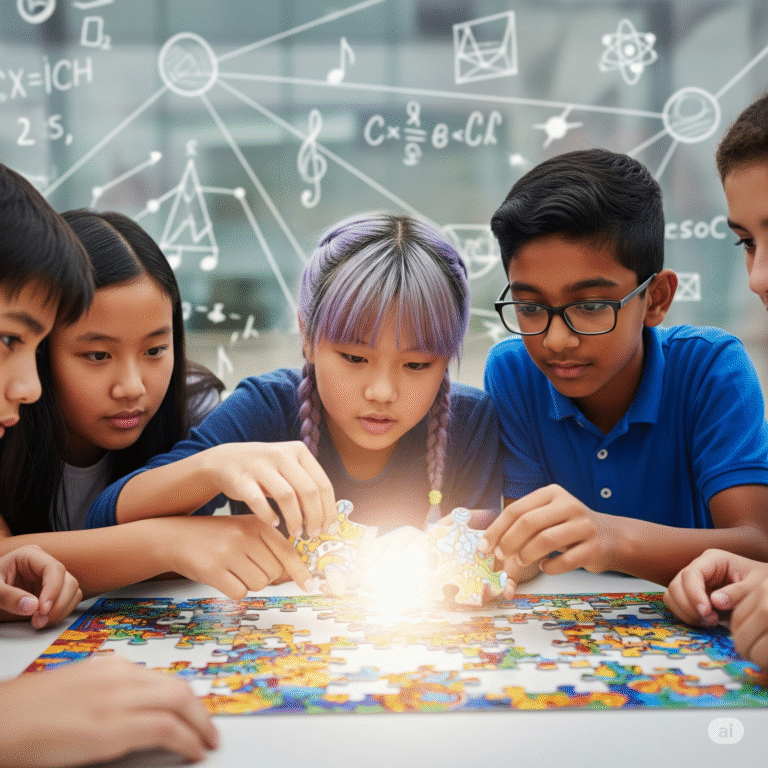3 Ways Teachers Can Use AI to Streamline Classroom Routines (and Save Hours Each Week)
In the rhythm of a school day, it’s the routines that quietly shape everything: morning procedures, transitions between activities, feedback cycles, documentation, and the reflective pause after the final bell. These rhythms sustain both students and teachers—until they don’t. In this article, we’ll explore 3 ways teachers can use AI to streamline classroom routines and save hours each week.
When routines begin to feel unsustainable, it’s often not because they’re poorly designed, but because they rely entirely on human stamina. And that’s where AI doesn’t replace the teacher—it fortifies the routine. This post isn’t about using AI to dazzle your class or automate your job. It’s about a practical shift: using AI to restore fluidity, intentionality, and focus to your day—so that your time aligns with your impact.
The Cognitive Cost of Teaching Without Support
Cognitive load theory reminds us that the brain has a limited capacity for processing new information at any given time (Sweller, 1988). For educators, that limit is tested daily—planning, adapting mid-lesson, managing behaviors, tracking progress, responding to emails, and supporting every learner.
We create systems to manage it all. But over time, even our most polished routines become heavy. The burden isn’t just logistical—it’s cognitive, emotional, and professional.
What AI offers is not efficiency for its own sake, but cognitive offloading—the delegation of repetitive, low-impact tasks to technology, so your finite attention can return to the heart of teaching: relationships, reflection, and responsive instruction.
Defining AI in the Context of the Classroom
Artificial Intelligence (AI), in an educational context, isn’t a singular tool—it’s an ecosystem of supports that include:
- Machine Learning: Learns from patterns in student work or teacher behavior to suggest next steps.
- Natural Language Processing (NLP): Understands teacher- or student-written prompts to generate content, summaries, or feedback.
- Automation: Executes repetitive tasks—like grading or scheduling—without added input.
This trifecta can be strategically layered into daily workflows to enhance, not erase, the human touch of teaching.
A More Intentional Toolkit: Using AI to Support the Rhythms of Your Day
1. Routine: Planning with Purpose
Challenge: Planning is foundational, but for many teachers, it becomes hurried, reactive, or pushed to evenings and weekends.
Solution: Use AI to frontload cognitive effort—then re-invest that time in adapting to students.
- Education Copilot: Generate lesson sequences, essential questions, and unit maps.
- MagicSchool AI: Draft classroom procedures, parent letters, or reflective prompts—all anchored in the language of practice.
Insight: Research from Darling-Hammond (2017) suggests that thoughtful lesson design is a top driver of student learning. But design takes time. AI can help restore that time to the teacher’s control.
2. Routine: Feedback as Formative, Not Just Formal
Challenge: High-quality feedback drives learning—but when delayed or generic, it loses its power.
Solution: Real-time, AI-enhanced feedback keeps students in the learning zone while keeping teachers out of grading purgatory.
- Brisk Teaching: Grade writing, align comments to standards, and adjust question complexity within Google Docs.
- Formative: Offers real-time insights during instruction—before misconceptions calcify.
- Knowt: Transforms readings or notes into adaptive quizzes that can be self-checked by students.
Academic Note: Black & Wiliam (1998) emphasized that formative assessment has the greatest impact when feedback is timely, specific, and actionable. AI makes that possible—even in large, diverse classrooms.
3. Routine: End-of-Day Reflection & Communication
Challenge: The school day doesn’t end at the bell. Communication, documentation, and catch-up tasks often extend into personal hours.
Solution: Automate essential—but time-consuming—tasks to preserve your evening for rest or rejuvenation.
- TeachMate AI: Drafts behavior reports, IEP goals, or family messages.
- MagicSchool AI Email Generator: Helps maintain professional tone across common educator scenarios.
Ethical Consideration: These tools maintain professional boundaries—without erasing your voice or values.
Framework for AI Integration: Reflective, Not Reactive
Before you introduce a tool, ask:
- What task is draining time or energy without advancing learning?
- Is this task high-frequency, low-creativity?
- Will this tool allow me to shift time to student interaction or instructional strategy?
- How will I evaluate the tool’s impact after 2 weeks?
AI needs to justify its place in your routine—not just add noise to the system.
Looking Ahead: The Role of AI in Professional Sustainability
We often talk about teacher burnout in terms of workload—but it’s also about disconnection. Disconnection from why we teach. From what we love about the work. From the creative, adaptive aspects of instruction.
AI isn’t a silver bullet, but it is a scaffold—a structure that can hold routine tasks so that your energy can flow toward deeper teaching and learning.
Closing Thought: Technology Should Honor the Teacher, Not Replace Them
A seamless day is not one that runs like a machine—it’s one that leaves space for humanity, for spontaneity, for listening. AI can make your routines more fluid, but you make them meaningful.
Use AI to support your professional longevity, not to accelerate the pace of burnout.
Ready to Try?
Explore the full Curaited AI Tool Directory at https://curaited.io to begin curating your own support system—one tool, one task, one bell at a time.







